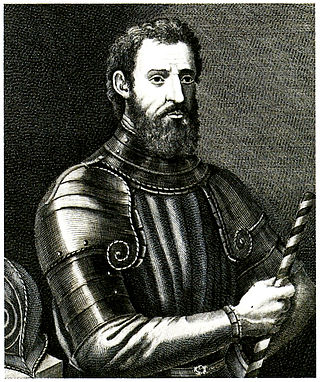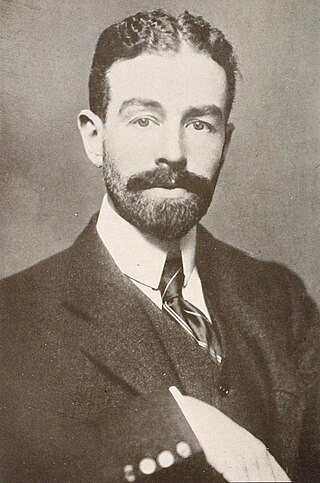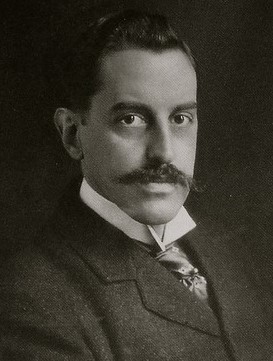
Oroondates Mauran (1791-1846) was a businessman in New York City who owned steamship and ferry operations.

Oroondates Mauran (1791-1846) was a businessman in New York City who owned steamship and ferry operations.
Mauran was born in Barrington, Rhode Island, the eighth child of Joseph Carlo and Olive (Bicknell) Mauran. [1] His father commanded two armed ships during the American Revolution. [2] : 183
He moved to New York City when he was 19 to become a merchant. Together with his partner Samuel Coates, he established the firm Coates & Mauran which owned ships that carried cargo from New York to the West Indies. [3] In 1822, he also entered into a venture to run regularly scheduled ships between New York City and Charleston, South Carolina. [3] [4]
Mauran bought a 50% stake in the Richmond Turnpike Company, which had been founded by Staten Island resident and United States Vice-President Daniel D. Tompkins. The company also operated the first steam boat ferry between Manhattan and Staten Island which became known simply as the Staten Island Ferry. [5] [6]
In 1848 he was involved in a court case related to one of the Turnpike ships, the Sampson, [7] which also had participated in a ramming battle with a rival ferry on September 2, 1838. [8] It was alleged in court that Mauran expressly approved of the ramming and even expressed regret the captain had not sunk the rival Wave. [9]
Mauran and Cornelius Vanderbilt gained control of the Turnpike company in 1838 after Thomkins died. However the Richmmond Turnpike Company was set to expire (having a limited duration by statute) so the partners assigned the equipment and real estate leases to themselves. The whole affair was bogged down in the courts for years [10] but the $50,000 annual profit made the business worth fighting for. [11] Mauran managed the company as President. [9] The same year Mauran died, Vanderbilt bought from his estate his shares in the Staten Island Ferry for $80,000. [5]
Mauran married Martha Eddy [3] in 1814 in Providence, Rhode Island. She was the daughter of Samuel Eddy, a Member of Congress, 1819-1825 and Rhode Island Chief Justice, 1827-1835. They had a daughter Josephine, (d. 1858) who married Oliver Wolcott Gibbs, Rumford Professor at Harvard. [12] Their eldest son, James Eddy Mauran (1817-1888), married Alice Cooper, a niece of James Fenimore Cooper. James became a noted bibliophile, linguist, antiquarian, and expert on heraldry. He was President of the Redwood Library in Newport, Rhode Island. [13]
Mauran lived in Manhattan in winter and on Staten Island in the summer. He purchased his Staten Island residence on Grymes Hill in 1831. [14]
He was part of the founding of the first Italian Opera House in New York at the corner of Church and Lombard streets, opened November 18, 1833 at a cost of over $100,000. The theatre burned down in 1839 after being unsuccessfully offered for sale at a time when opera was a novelty in America. [2] : 183 [11] He was one of the oldest members of the Union Club of the City of New York. [11] [15]

Giovanni da Verrazzano was an Italian (Florentine) explorer of North America, in the service of King Francis I of France.

Cornelius Vanderbilt, nicknamed "the Commodore", was an American business magnate who built his wealth in railroads and shipping. After working with his father's business, Vanderbilt worked his way into leadership positions in the inland water trade and invested in the rapidly growing railroad industry, effectively transforming the geography of the United States.

The Staten Island Ferry is a fare-free passenger ferry route operated by the New York City Department of Transportation. The ferry's single route runs 5.2 miles (8.4 km) through New York Harbor between the New York City boroughs of Manhattan and Staten Island, with ferry boats making the trip in about 25 minutes. The ferry operates 24 hours a day, 7 days a week, with boats leaving every 15 to 20 minutes during peak hours and every 30 minutes at other times. Apart from NYC Ferry's St. George route, it is the only direct mass-transit connection between the two boroughs. Historically, the Staten Island Ferry has charged a relatively low fare compared to other modes of transit in the area; and since 1997, the route has been fare-free. The Staten Island Ferry is one of several ferry systems in the New York City area and is operated separately from systems like NYC Ferry and NY Waterway.

William Henry Vanderbilt was an American businessman and philanthropist. Known as "Billy," he was the eldest son of Commodore Cornelius Vanderbilt, an heir to his fortune and a prominent member of the Vanderbilt family. Vanderbilt became the richest American after he took over his father's fortune in 1877 until his own death in 1885, passing on a substantial part of the fortune to his wife and children, particularly to his sons Cornelius II and William. He inherited nearly $100 million from his father. The fortune had doubled when he died less than nine years later.

The Vanderbilt family is an American family who gained prominence during the Gilded Age. Their success began with the shipping and railroad empires of Cornelius Vanderbilt, and the family expanded into various other areas of industry and philanthropy. Cornelius Vanderbilt's descendants went on to build grand mansions on Fifth Avenue in New York City; luxurious "summer cottages" in Newport, Rhode Island; the palatial Biltmore House in Asheville, North Carolina; and various other opulent homes. The family also built Berkshire cottages in the western region of Massachusetts; examples include Elm Court.

William Kissam Vanderbilt I was an American heir, businessman, philanthropist and horsebreeder. Born into the Vanderbilt family, he managed his family's railroad investments.

Brigadier General Cornelius "Neily" Vanderbilt III was an American military officer, inventor, engineer, and yachtsman. He was a member of the Vanderbilt family.

Richard Morris Hunt was an American architect of the nineteenth century and an eminent figure in the history of American architecture. He helped shape New York City with his designs for the 1902 entrance façade and Great Hall of the Metropolitan Museum of Art, the pedestal of the Statue of Liberty, and many Fifth Avenue mansions since destroyed.

Alfred Gwynne Vanderbilt Sr. was an American businessman and member of the Vanderbilt family. A sportsman, he participated in and pioneered a number of related endeavors. He died in the sinking of the RMS Lusitania.

Charles Morgan was an American railroad and shipping magnate. He played a leading role in the development of transportation and commerce in the Southern United States through the mid- to late-19th century.

William Henry Vanderbilt III was an American politician who served as Governor of Rhode Island from 1939 to 1941, and a member of the wealthy and socially prominent Vanderbilt family.

George Washington Vanderbilt II was an American art collector and member of the prominent Vanderbilt family, which amassed a huge fortune through steamboats, railroads, and various business enterprises. He commissioned the construction of a 250-room mansion, the largest privately owned home in the United States, which he named Biltmore Estate.

The term North Shore is frequently applied to a series of neighborhoods within the New York City borough of Staten Island.
Grymes Hill is a 374 feet (114 m) tall hill formed of serpentine rock on Staten Island, New York. It is the second highest natural point on the island and in the five boroughs of New York City. The neighborhood of the same name encompasses an area of 0.894 square miles (2.32 km2) and has a population of 8,263 people. The hill also includes parts of the Silver Lake neighborhood. The area includes part of ZIP Codes 10301 and 10304.

St. George Terminal is a ferry, railway, bus, and park and ride transit center in the St. George neighborhood of Staten Island, New York City. It is located at the intersection of Richmond Terrace and Bay Street, near Staten Island Borough Hall, SIUH Community Park and Richmond County Supreme Court. St. George is one of the few remaining rail-boat connections in the United States.
Samuel Barton was an American politician and a one-term U. S. Representative from New York from 1835 to 1837.
The Allaire Iron Works was a leading 19th-century American marine engineering company based in New York City. Founded in 1816 by engineer and philanthropist James P. Allaire, the Allaire Works was one of the world's first companies dedicated to the construction of marine steam engines, supplying the engines for more than 50% of all the early steamships built in the United States.

The Staten Island Railway (SIR) is the only rapid transit line in the New York City borough of Staten Island and is operated by the Staten Island Rapid Transit Operating Authority, a unit of the Metropolitan Transportation Authority. The railway was historically considered a standard railroad line, but today only the western portion of the North Shore Branch, which is disconnected from the rest of the SIR, is used by freight and is connected to the national railway system.

Cornelius Jeremiah Vanderbilt was an American member of the Vanderbilt family. After having a troubled relationship with his father, Cornelius Vanderbilt, he eventually committed suicide at the age of 51.
The Walter B. Keane (WB), and under the nickname "The Barge", was an 168-bed jail barge used to hold inmates for the New York City Department of Corrections. The barge is currently anchored off Staten Island but was previously docked on Rikers Island, near Hunts Point.
Apr. 1, 1822: Barker & Hopkins and Oroondates Mauran (1796-1846) begin a regular line of packets between New York and Charleston (the "Old Established Line") with sailings three times a month; this is the first regularly scheduled packet.